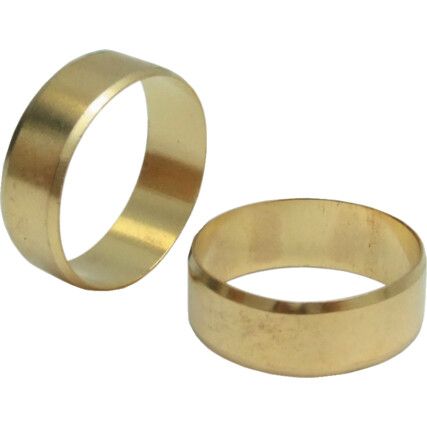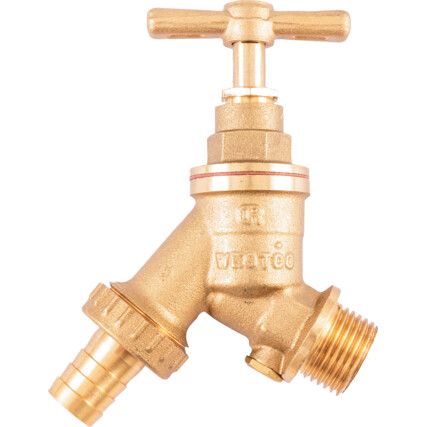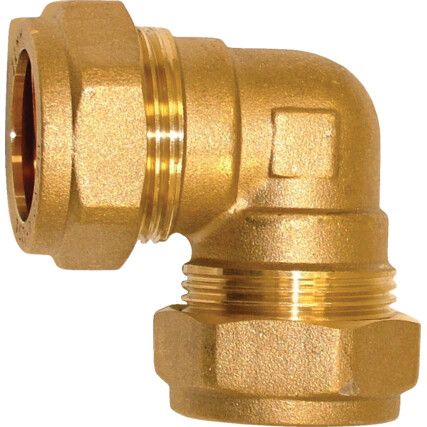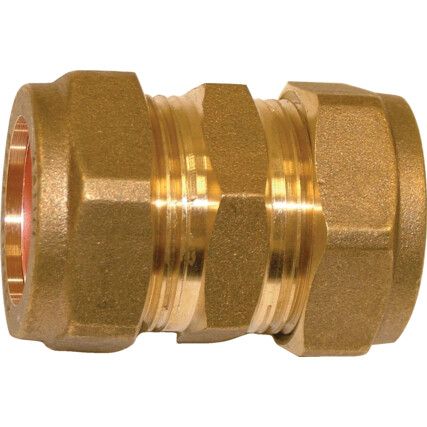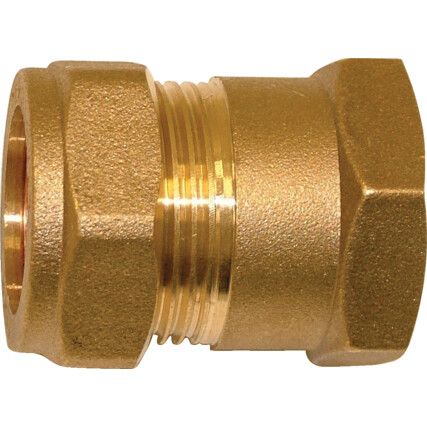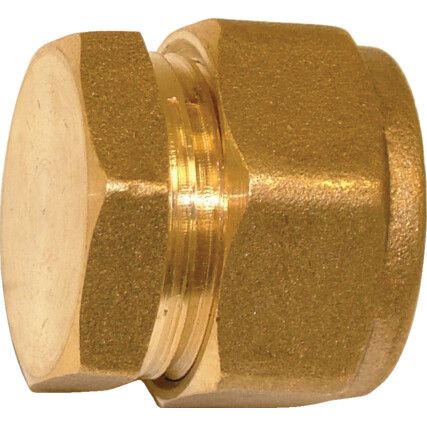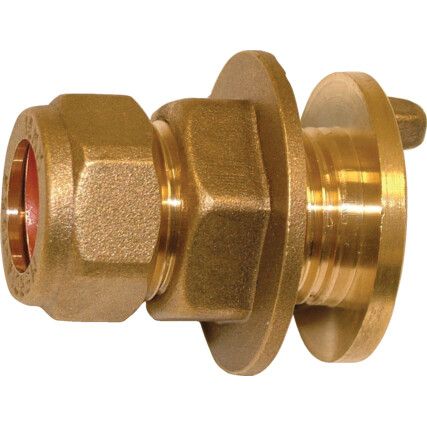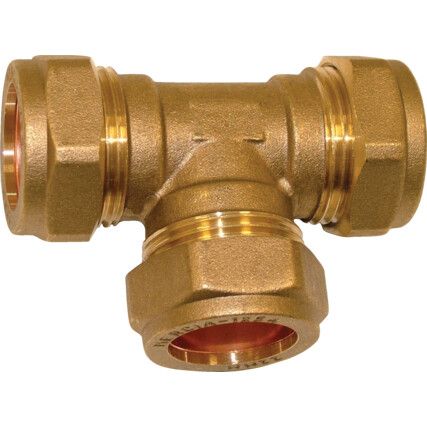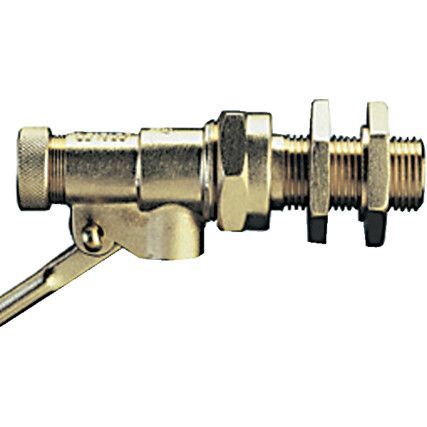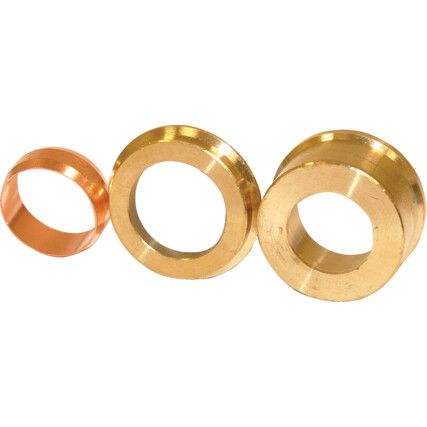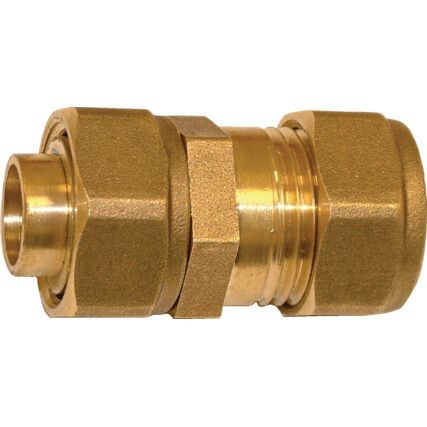Compression Fittings
When connecting pipes for use in plumbing, across domestic, commercial, and industrial applications, compression fittings provide an easy to apply solution. Compression fittings are an extremely efficient way of coupling pipes for a wide range of applications, from mains water to hydraulic pumping systems.
What are compression fittings?
Compression fittings, also known as compression joints or compression couplings, are used in the creation or repair of plumbing systems to connect lengths of copper or plastic pipework together or to other plumbing components such as valves. Fitting and removing compression fittings are straightforward and require only a few common tools, such as a spanner. They are a good choice for joining pipes in confined spaces that would be difficult to solder without risk of fire.
Compression fittings are made up of three components, making the application relatively simple. The main body, also known as a tapered insert, is pipe like in construction and allows water to pass through the pipe joint. The second part is a compression ring, also known as an olive or ferrule, the olive is compressed to the pipe to make a watertight seal between the pipe and the fitting. The last part is a threaded nut that grips the fitting onto the pipework to ensure it stays in place.
Why compression fittings?
Compression fittings eliminate the need for flaring or soldering pipe joints which require specialist tools to complete. As a heat source is not required for connect compression fittings they are ideal in situations where soldering irons or torches may cause a risk of fire.
Compression fittings are ideal in installations that may require occasional disassembly or partial removal to allow for maintenance. Compression fittings joints can be broken and remade without affecting the integrity of the joint.
When are compression fittings used?
Compression fittings are used in a wide variety of professional and industrial plumbing applications, as well as being suitable for DIY projects due to the simplicity of fitting and use of common tools. In addition to plumbing projects, these fittings can be used for gas installations or hydraulic equipment.
Compression fitting types
Compression fittings are available in a variety of shapes and sizes, such as:
• Straight Coupler - A straight coupler, or union fitting, provide the simplest fitting by connecting two lengths of pipe in a straight through connection.
• Elbow Fittings - Used in situations where pipework is required to change direction. Elbow fittings typically come in 90 or 45 degree turns, but other angles are available to suit the application.
• Tee Fittings - Used to connect three pipes together, with either two inputs and one output or one input and two outputs. Tee fittings are so-called because they have a T shape body.
• Adaptors - Also known as reducing bushes allow for pipes of different dimensions to be joined together.
Considerations when choosing a compression fitting
• **Type** - The right type of fitting makes coupling pipes a simpler task. Using elbows or tee fittings at points within the pipework set up can eliminate the need to bend pipes.
• **Size** - Matching the pipe size and fitting size will ensure the best connection to create a watertight seal.
• **Material** - Compression fittings are ideal to be used with annealed copper, aluminium, PEX, polyethylene and nylon tubing that is manufactured to CTS (Copper Tube Size). For other materials of pipework it is recommended to match the same pipe and fitting materials.
### FAQs
*Will compression fittings leak over time?*
Compression fittings create a watertight seal on pipes, and if installed correctly will prevent leaks.
*What the difference between nominal dimensions vs. outside diameter (OD) dimensions?*
Nominal is used to describe common pipe and fitting measurements in the plumbing industry. The nominal size is the inside diameter measurement of the pipe, although this can vary slightly due to the wall thickness of the pipe. The outside diameter (OD) dimensions refer to the actual outside diameter of the pipe.
*How tight do you tighten a compression fitting?*
The threaded nut of a compression fitting can be initially tightened by hand, allowing full control for the installer to make adjustments. Once the pipework and fitting are in position a spanner can then be used to tighten the nut and create a seal.
*How do I stop my compression fitting from leaking?*
If a compression fitting is leaking, it can often be fixed by tightening the fitting using a spanner and pipe grips. If the leak persists, applying jointing compound or PTFE tape to the olive can help create a seal.
